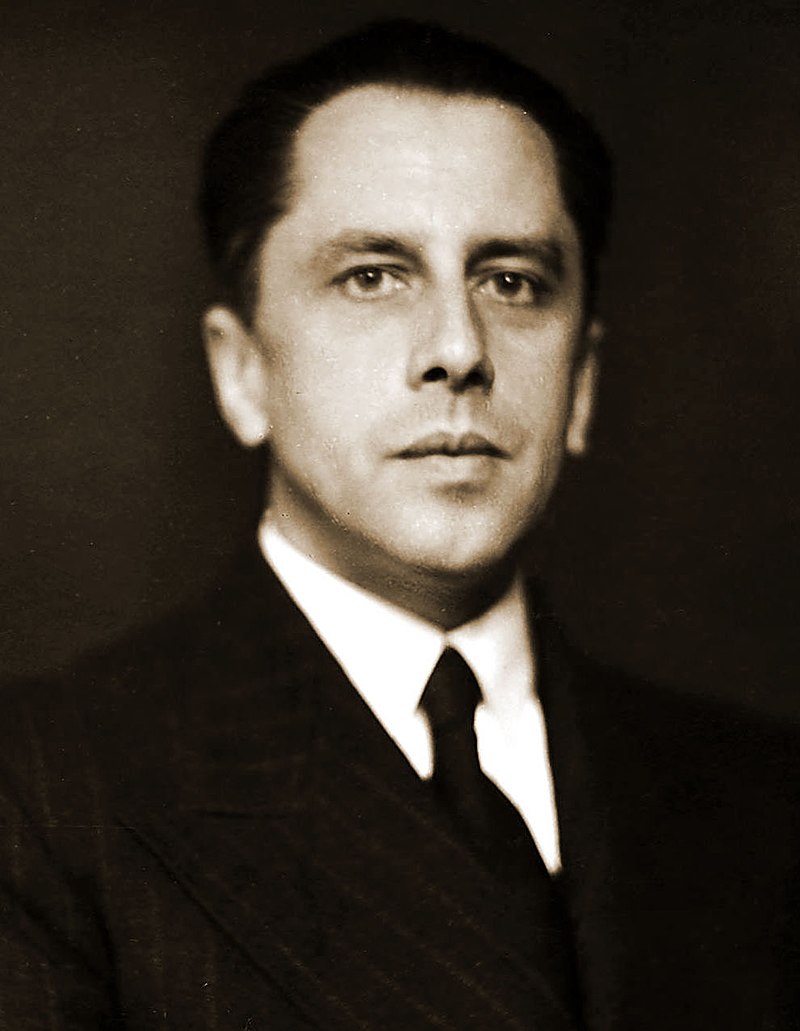Tadeusz Romer, as a Polish diplomat, is credited with great merit for helping Polish citizens in exile. His efforts saved over 2,000 Polish Jews who had taken refuge in the Far East from the Holocaust.
Diplomatic career in times of peace and war
Romer was born in 1894 to a family of landowners in the estate of Antonosz in today’s Lithuania. In 1917, after completing his studies in Switzerland, the promising young lawyer became secretary in Paris to Roman Dmowski, who was President of the Polish National Committee in Paris.
When Poland regained its independence in 1918, Romer served as secretary of the Polish Embassy in Paris and then focused on his work in Poland. There, he was promoted to head and chief of the Western Department in the Political and Economic Department of the Ministry of Foreign Affairs. In the 1930s, his career in the ministry thrived – he became a consul to the diplomatic mission and later to the embassy in Rome, from 1935 an ambassador in Portugal, and then from 1937 ambassador in Japan. The Second World War found him in the Far East.
The ambassador maintained very good contacts with the imperial court, which proved very important when refugees from Poland arrived there. Unfortunately, political reasons, i.e. Japan’s affiliation to the Axis States and German pressure, led to the liquidation of the Polish diplomatic mission in Tokyo in 1941. Romer and his staff therefore moved to Shanghai. There, the Polish ambassador played a key role in helping Polish refugees, mainly Jews.
As a result of negotiations and interstate talks, the Polish ambassador left Shanghai in the summer of 1942 as part of an exchange of Western diplomats for Japanese diplomats. Then, in the autumn of the same year, he was appointed ambassador to the USSR. He remained in Kuibyshev, where the Polish mission was located, until the spring of 1943. As in Shanghai, Romer also played a major role on inhospitable Soviet territory, advocating for Polish citizens deported to Siberia and Central Asia.
Romer’s abilities and successes were recognised in London – in July 1943, he was appointed Minister of Foreign Affairs in Stanisław Mikołajczyk’s government.
When the Second World War ended, Minister Romer remained in London and then went to Canada, where he found employment at Montreal’s McGill University.
In exile, his attention to Polish affairs was reflected in the founding of the Polish Scientific Institute in Canada, which had the status of a university institution. Also, thanks to his efforts, the largest Polish library in North America, known as the Wanda Stachiewicz Polish Library, was established.
Tadeusz Romer died in 1978.
Diplomatic efforts for Jewish refugees in Japan
The first Jewish refugees arrived in Japan in September 1941. Most of them were Jews who had escaped the Holocaust from Lithuania. They were able to leave it by going to the Far East because there was a Japanese consulate in Kaunas, headed by Chiune Sugihara. This consul was sympathetic to the fleeing Jews, issuing them transit visas. The Dutch Honorary Consul Jan Zwartendijk was also involved in helping, permitting visa-free travel to Dutch Curacao, provided that the Jews obtained transit visas from Sugihara.
The route for the refugees from Kaunas Lithuania was quite complicated. First, the groups travelled to Vladivostok, from where they had to cross the Sea of Japan to Tsurugi on the island of Honsiu. Once they arrived in Japan, the journey did not end, as they had to travel by bus to a railway station, from where the refugees were taken to Yokohama or Kobe.
From the beginning of their stay in Japan, the newcomers were cared for by the Polish ambassador. Apart from standard assistance, his main task was to arrange destination visas for Polish citizens, as they only had transit documents. Extensive negotiations took place with the diplomatic services of numerous countries on this issue. This task was one of the most difficult, as most of them were closed to refugees and especially to people of Jewish nationality. Polish MPs in Australia and Canada were also involved in the talks.
Thanks to Romer’s hard and dedicated work, he obtained quotas of asylum visas to the following countries: to Canada – 250, to Australia – 65, to New Zealand – 30 and to Burma (now Myanmar) – 50. In addition, 400 certificates to Palestine were obtained, and individual trips to the USA (about 350 people) and Central America (about 100 people) were provided.
To ensure that the on-the-ground assistance in Japan proceeded smoothly and without interruption, Romer founded the Polish Committee for Relief of War Victims (with headquarters in Kobe and Tokyo), with his wife Zofia as its chairwoman. Her activity in the Committee was very extensive. It was very important to establish cooperation with Jewish organisations, which provided considerable aid. They included Joint from New York and the Jewish religious community in Kobe. To make it easier for the refugees to arrange their affairs, Romer set up a temporary consular office in Osaka so that they did not have to make long and tiring journeys to Tokyo.
In 1941, more than 900 refugees who had failed to obtain visas to Allied countries travelled with the ambassador to Shanghai. There, Romer began another episode of Polish diplomacy activities in the Far East.





